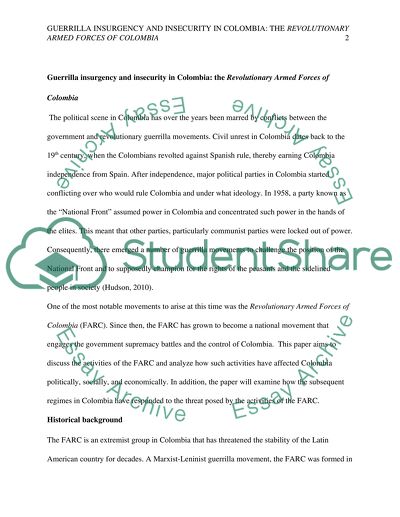Cite this document
(“Guerilla insurency and insecurity in Colombia: the Revolutionary Armed Essay”, n.d.)
Retrieved from https://studentshare.org/history/1401703-guerilla-insurency-and-insecurity-in-colombia-the-revolutionary-armed-forces-of-colombia
Retrieved from https://studentshare.org/history/1401703-guerilla-insurency-and-insecurity-in-colombia-the-revolutionary-armed-forces-of-colombia
(Guerilla Insurency and Insecurity in Colombia: The Revolutionary Armed Essay)
https://studentshare.org/history/1401703-guerilla-insurency-and-insecurity-in-colombia-the-revolutionary-armed-forces-of-colombia.
https://studentshare.org/history/1401703-guerilla-insurency-and-insecurity-in-colombia-the-revolutionary-armed-forces-of-colombia.
“Guerilla Insurency and Insecurity in Colombia: The Revolutionary Armed Essay”, n.d. https://studentshare.org/history/1401703-guerilla-insurency-and-insecurity-in-colombia-the-revolutionary-armed-forces-of-colombia.


